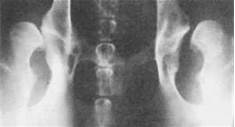DYSPLASIA IN BOXERS
According to the Orthopedic Association for Animals, Hip Dysplasia is a terrible genetic disease because of the various degrees of arthritis (also called degenerative joint disease, arthrosis, osteoarthrosis) it can eventually produce, leading to pain and debilitation.
The OFA currently reports the Boxer as 96th in incidence of hip dysplasia, with approximately 11% of those screened being dysplastic.
The very first step in the development of arthritis is articular cartilage (the type of cartilage lining the joint) damage due to the inherited bad biomechanics of an abnormally developed hip joint. Traumatic articular fracture through the
joint surface is another way cartilage is damaged. With cartilage damage, lots of degradative enzymes are released into the joint. These enzymes degrade and decrease the synthesis of important constituent molecules that form hyaline cartilage called proteoglycans. This causes the cartilage to lose its thickness and elasticity, which are important in absorbing mechanical loads placed across the joint during movement. Eventually, more debris and enzymes spill into the joint fluid and destroy molecules called glycosaminoglycan and hyaluronate which
are important precursors that form the cartilage proteoglycans. The joint's lubrication and ability to block inflammatory cells are lost and the debris-tainted joint fluid loses its ability to properly nourish the cartilage through impairment of nutrient-waste exchange across the joint cartilage cells.
The damage then spreads to the synovial membrane lining the joint capsule and more degradative enzymes and inflammatory cells stream into the joint. Full thickness loss of cartilage allows the synovial fluid to contact nerve endings in the subchondral bone, resulting in pain. In an attempt to stabilize the joint to decrease the pain, the animal's body produces new bone at the edges of the joint surface, joint capsule, ligament and muscle attachments (bone spurs). The joint capsule also eventually thickens and the joint's range of motion decreases.
No one can predict when or even if a dysplastic dog will start showing clinical signs of lameness due to pain. There are multiple environmental factors such as caloric intake, level of exercise, and weather that can affect the severity of
clinical signs and phenotypic expression (radiographic changes). There is no rhyme or reason to the severity of radiographic changes correlated with the clinical findings. There are a number of dysplastic dogs with severe arthritis
that run, jump, and play as if nothing is wrong and some dogs with barely any arthritic radiographic changes that are severely lame.
Gentry Boxers are X-rayed and evaluated by an orthopedic specialist in accordance with American Boxer Club and AKC Breeder of Merit requirements. All results are published on the OFA Database. To date, we have had no grades lower than GOOD.


